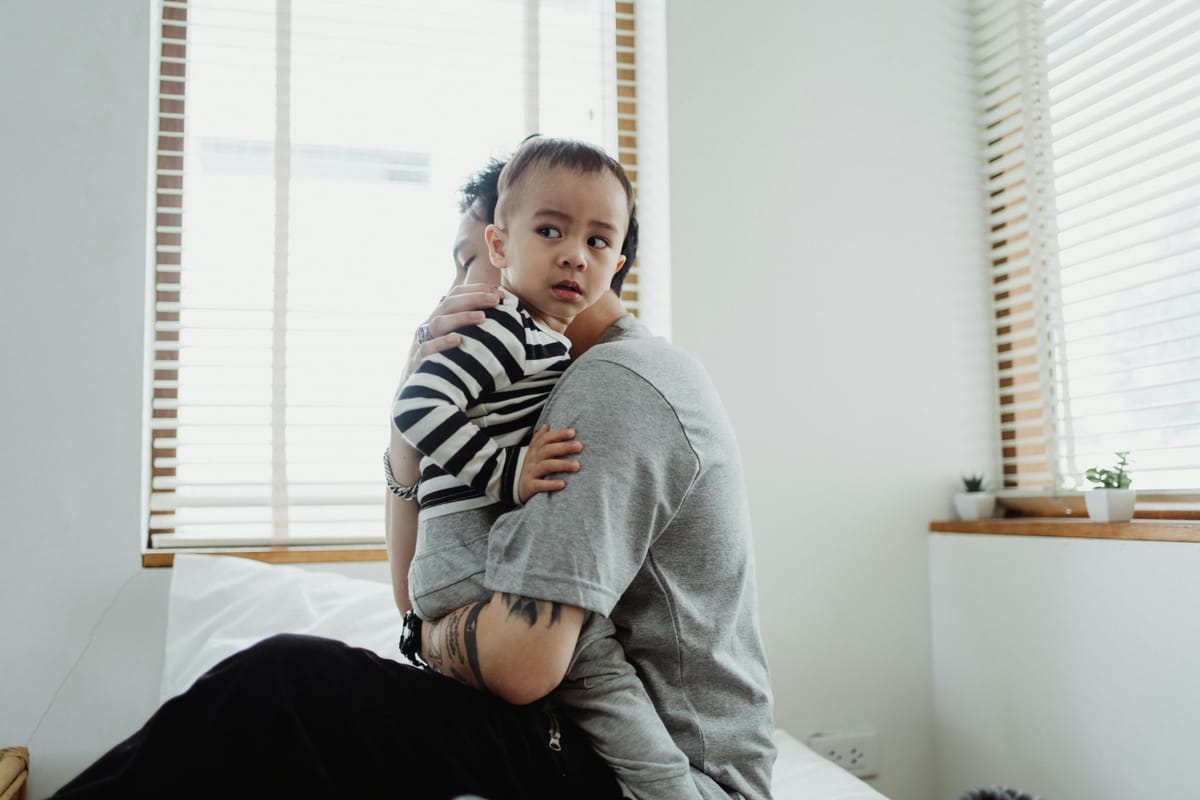Animal Phobia: How to Help Your Child Overcome Fear of Animals

Fear of animals is one of the most common childhood phobias. While some fear is developmentally appropriate—especially in early years—when it becomes persistent, intense, or interferes with daily life, it may be time to intervene. Whether it's a fear of dogs, cats, or even small creatures like spiders, this blog will guide you through effective strategies to help your child overcome animal-related fears with empathy, knowledge, and patience.
Understanding the Fear of Animals
What Is Zoophobia?
Zoophobia is the term used to describe a specific phobia of animals. Children with this fear may experience anxiety or panic when seeing, hearing, or even thinking about animals. Although it can involve any animal, fear of dogs is particularly common.
Common Symptoms of Animal Phobia in Children
Recognizing the symptoms early is key to supporting your child. These can include:
- Crying or screaming when encountering an animal
- Avoiding parks, pet stores, or the outdoors
- Physical symptoms like shaking, sweating, or rapid heartbeat
- Expressing irrational beliefs (e.g., “The puppy will bite me!”)
If these physical symptoms and behavioral signs persist or worsen, it could point to a specific phobia requiring professional attention.
Why Do Children Develop a Fear of Animals?
The Role of Age, Experience, and Emotion
Many children go through phases of fear, especially if they've had a negative experience such as being startled by a dog barking or chased by a puppy. In some cases, phobias in children stem from observing a fearful adult or peer. Children are highly perceptive, and even a parent’s tense body language around animals can reinforce that fear.
Emotion and behavior are tightly linked. As your child grows, early fears may subside naturally, but some remain and develop into intense phobic reactions if not gently addressed.
One of the Most Common Childhood Phobias
Fear of animals is considered a common childhood issue and, thankfully, one that is highly treatable. With the right guidance, children develop the tools to face their fear and build confidence.

How Fear Affects Your Child’s Daily Life
When Fear Interferes
When fear starts to interfere with everyday activities—like refusing to go on walks, avoiding visits to friends with pets, or feeling anxious at summer camp—it's time to take proactive steps.
The Anxiety Loop
Anxiety can be self-reinforcing. The more your child is afraid, the more they avoid the feared object, which increases the intensity of the fear. Therapy, structured exposure, and consistent encouragement can help break that cycle.
Helping Your Child Face Their Fear
How to Gently Begin
Help your child overcome their fear by gradually exposing them to animals in a safe, comfortable environment. Start by:
- Reading books or watching videos about animals like dogs or snakes
- Talking about animals in a gentle, non-judgmental tone
- Asking them how they feel when they see a dog or spider
These low-pressure methods can help children express themselves and begin understanding their fears without immediate confrontation.

Exposure Therapy: A Gentle Approach to Overcoming Fear
Gradual Exposure Builds Confidence
Exposure is one of the most effective strategies to help your child overcome a fear of animals. It must be introduced slowly and strategically. The goal is not to force interaction, but to give your child time to adjust to the specific animalthey fear—whether it’s a dog, snake, or even a small spider.
Start with steps like:
- Looking at photos or videos of the animal
- Visiting a clinic or pet store and observing from a distance
- Watching another child interact with the animal safely
- Introducing a calm, well-behaved animal in a controlled setting
These early steps can help them overcome their fear by changing the brain’s association with the trigger from anxiety to safety.
Use Encouragement and Trust
Building trust is essential. Encourage your child to share how they feel and validate those feelings. Let them know it’s okay to feel afraid, and that bravery doesn’t mean being fearless—it means facing fears step by step.
Tips:
- Celebrate small wins (“You stood near the dog today!”)
- Avoid using fear to discipline or shame (“Stop crying, it’s just a dog!”)
- Always ask before advancing to the next step in exposure
When children feel safe, they’re more likely to be brave and keep progressing.
When to Seek Professional Help
When Fear Becomes a Phobia
If your child’s fear has become so severe that it causes distress, interferes with school, social events, or disrupts sleep (e.g., “The dog will bite me in my dreams”), it may be time to consult a psychologist or licensed therapist.
A specific phobia like zoophobia may benefit from:
- Cognitive-behavioral therapy (CBT): Helps children recognize irrational thoughts and replace them with rational ones
- Behavioral therapy: Focuses on gradual exposure and desensitization
- Play therapy: Especially useful for younger children who express themselves through play
- Medication: In rare cases, short-term medications may be prescribed, but this should always be discussed with a mental health professional
Ask your provider if they specialize in phobias in children or child psychology. A well-designed plan with professional oversight can be a breakthrough for families dealing with severe animal-related phobias.
Reinforcing Positive Behavior Around Animals
Teach and Model Calm Behavior
Teach your child how to approach animals safely. This includes never rushing up to a dog, always asking permission from an owner, and watching for body language signals like a wagging tail or flattened ears. Modeling appropriate behaviour as a parent is equally important. If you're nervous around animals, your child will likely mirror that discomfort.
Practice rules such as:
- Stay still if a dog approaches you
- Avoid making loud noises or sudden movements
- Speak calmly and gently
Your child will learn how to feel safe by seeing calm adult behavior.
Let the Child Lead
Let your child face fears at their own pace. Don’t force interaction. Instead, offer opportunities and let them guide the process. If your child wants to leave the room or take a break, support that choice.
Giving children this control helps reduce anxiety and builds autonomy. Over time, their confidence grows—and fear shrinks.

Help Your Child Overcome a Fear of Dogs
Fear of dogs is one of the most common specific animal phobias in children. While some kids are just a little nervousaround unfamiliar pets, others may feel deeply distressed or even terrified by the sight, sound, or sudden movement of a dog. In severe cases, the fear can frighten a child up at night, disrupting sleep or making outings stressful if dogs might be nearby.
Understand What Makes Dogs Scary
Dogs can be loud, fast, and unpredictable. For a child, especially one not used to interacting with animals, this can be overwhelming. Even friendly dogs may bark or jump—behaviors that can easily feel scary to a young child. If your child is afraid of dogs, try to identify what exactly triggers the fear. Is it barking? Size? Past negative experiences?
Tips to Help Your Child Feel Comfortable Around Dogs
- Start with calm, quiet dogs: Avoid highly energetic or large dogs at first. A gentle older dog that moves slowly is ideal.
- Observe from a distance: Let your child watch dogs from afar in a park or neighborhood. Talk about what the dog is doing and how it’s behaving.
- Avoid forcing interaction: Never make your child touch or approach a dog before they’re ready. This can increase anxiety and reinforce the fear.
- Discuss what to expect: Teach your child how dogs communicate and what certain behaviors mean.
- Read books or watch shows: Stories that show kids interacting with animals in positive ways can help normalize the idea and reduce fear.
- Use exposure gradually: Introduce your child to dogs in familiar, calm settings rather than crowded or chaotic environments.
As your child gains confidence, you may notice them becoming more comfortable around dogs and more willing to engage. Always celebrate these small wins and offer reassurance to help reinforce progress.
Helping Children Grow Past Animal Phobia
Overcoming an irrational fear takes time. As your child grows, you may notice periods where they seem to regress or become fearful again. This is normal.
Revisit exposure techniques, talk openly about emotions, and encourage consistent experiences around animals. Over time, with your patience and support, they can become not only comfortable but perhaps even interested in caring for a pet.
Final Encouragement for Parents
You don’t need to solve everything alone. Whether you choose gentle exposure at home or professional therapy, what matters most is that your child feels heard, supported, and encouraged. Helping your child overcome their fear of animals can be a beautiful opportunity to teach them about courage, trust, and self-growth.
Helpful Resources and Related Articles:
- American Psychological Association – Helping Children with Phobias
- Understanding Child Anxiety
- Tips for Introducing Kids to Pets
Bullet Summary for Quick Readers:
- Fear of animals is a common and treatable childhood phobia
- Symptoms include avoidance, physical distress, and anxiety
- Gradual exposure and reassurance build trust and reduce fear
- Seek professional therapy if the fear is severe or long-lasting
- Encourage and model calm behavior around animals
- Let children progress at their own pace with your support




